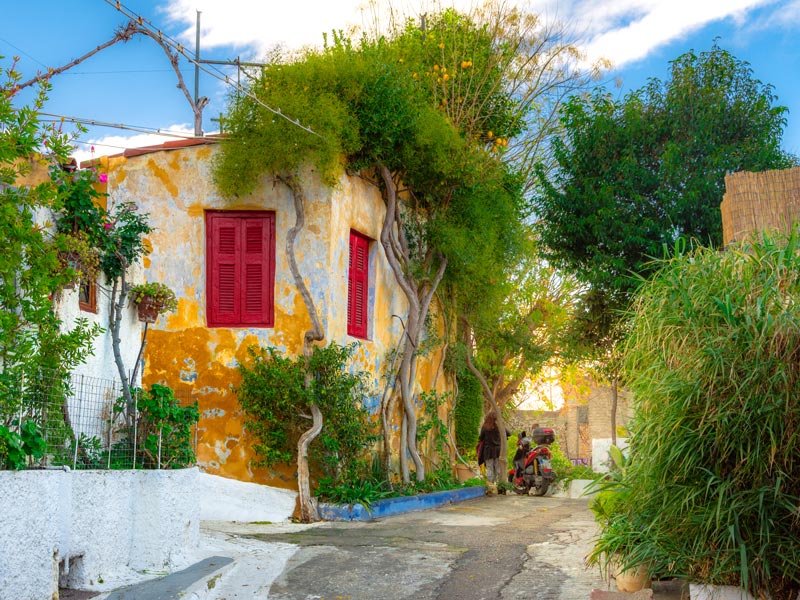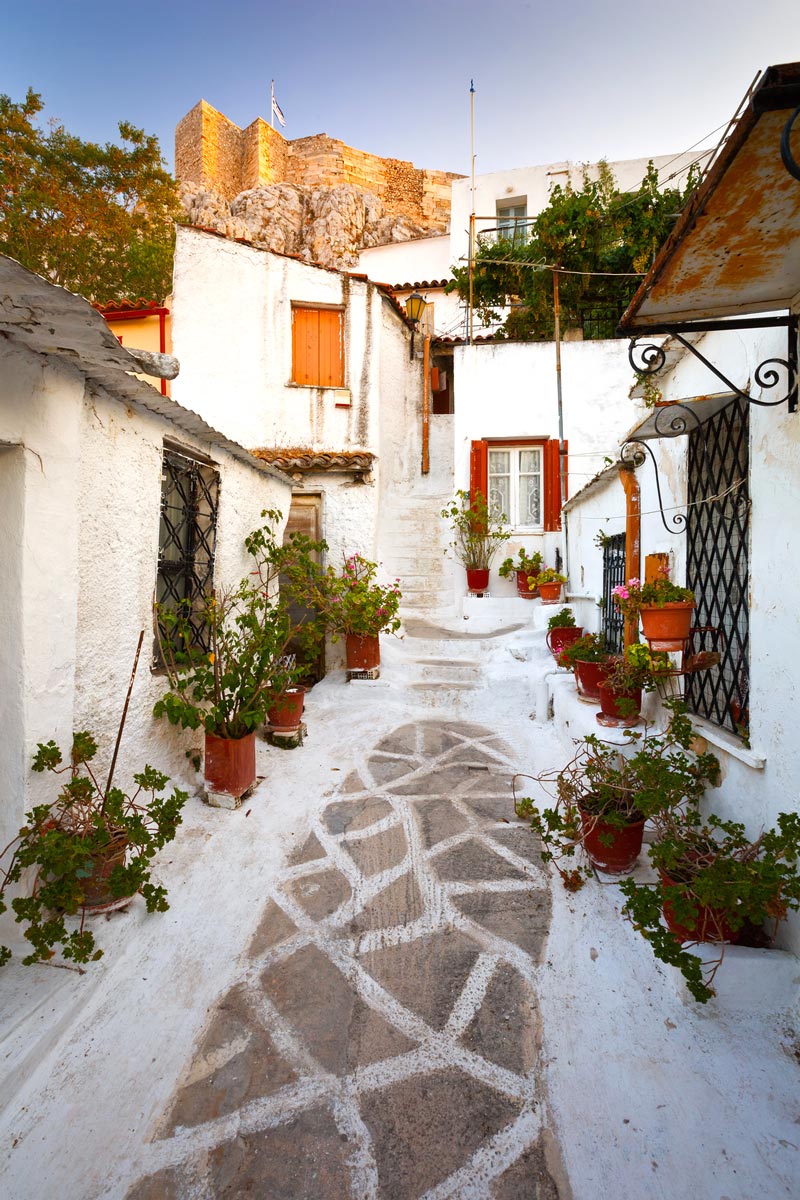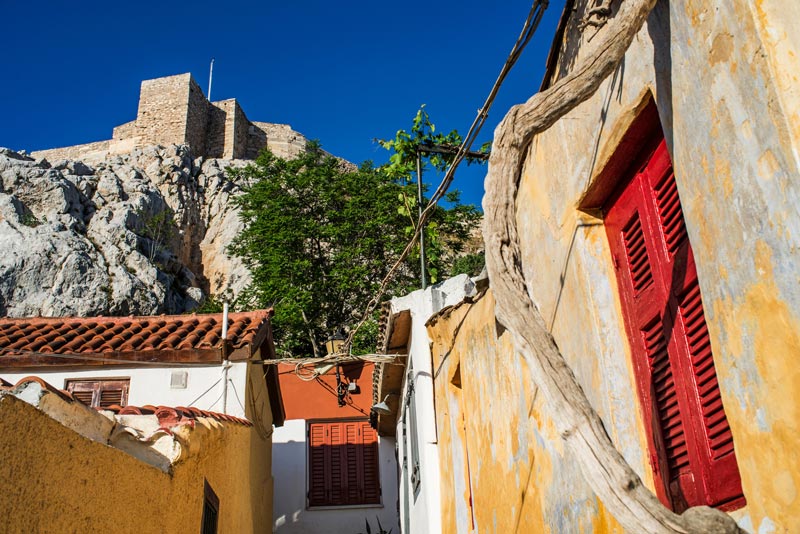Anafiotika

Anafiotika
Marvel at the tiny whitewashed houses built between the rocky, narrow, steep winding streets and steps; stone walls, and gardens full of bougainvillea blossoms on the northeastern side of the Acropolis Hill.

The story behind this diminutive slice of Athens is simple and commenced a few years following the creation of the Hellenic State, in the mid-19th Century. The purpose of the refurbishment of King Otto of Greece's Palace (circa 1835) led to the search for the best craftsmen in the country. This was how the first craftsmen, the carpenter G. Damigos and the mason M. Sigalas, moved from the island of Anafi to Athens, and thus became the first inhabitants of Anafiotika. In their search for better luck and work, their example was followed by other compatriots who found the stretch below the Acropolis very convenient for building their petite homes, even though the area had been classified as an archaeological zone since 1834 and rebuilding was forbidden (arbitrary buildings are an old story in Greece since ancient times similar laws have been violated).
This is how Anafiotika was created and built according to typical Cycladic architecture. In 1922, Greek refugees from Asia Minor settled in the area, as well - thus altering the population make-up. As the years passed, demolitions and expropriations took place in the name of archeological research. Nowadays, approximately 45 houses have been preserved and are currently inhabited.

This special settlement is a faithful copy of a neighborhood from an island in the Cyclades. Once you leave Plaka behind you and in a few seconds, you will find yourself in a location with a unique street plan in which it is impossible to keep a predetermined course. There are places where a human body can barely pass, steps that seem to lead to a dead-end, but at the last moment turn into a new alley. Houses drowned in bougainvilleas and pots of all kinds, endless cats that have a permanent plate at the front door, while sometimes you will need to go through a yard to continue your way. Depending on the course you choose, you will meet notable churches in the area, as well as the first Greek University. At some point, you will see the sign that sends you to the Acropolis - if you are relaxed and have the time it is the best you can do to complete your walk in the best way. Do not think that a stroll in Anafiotika will take a long time - and this is exactly the reason why you can easily include it in your program.

What you will enjoy is the magnificent view of Athens from above, a district in the human footsteps with quietness and unprecedented smells and paths that will take you, even for a while, away from the bustling center. Returning from Plaka you will fall on the cafes and restaurants of the area - most of them are extremely picturesque and integrated into windows and terraces in bright colors of an old, distinctive Athens.
Moreover, even at a time when Athens was not so full of cement and iron, Anafiotika was a source of inspiration for many painters and writers. Evidence of these creations can be discovered in the many galleries that adorn the streets of Plaka for art lovers to pursue and purchase as a perfect keepsake of this visit through time...
How to get to Anafiotika?
Many roads lead up to the settlement. If you are in the center near Syntagma and Ermou Street, just go to the Diocese and take the road from the square that goes up to Plaka. You will end up on Adrianou Street and in front of you you will see the oldest house in Athens, sometimes it is open and you can see details. Turn right on Adrianou and keep your mind on the signs of the vertical streets until you find Mnisikleous Street that takes you directly to Anafiotika.
If you are taking the metro, get off at the Acropolis station, where you are leaving on Makrygianni Street. Continue upwards (cross Dionysiou Areopagitou vertically), Makrygianni becomes Vyronos, and continue until you find Thespidos Street on your left - at the end is Stratonos Street, turning left you are already in Anafiotika. It is much closer and much easier than it sounds. There is also the road that you can take following the signs for the theater of Dionysus, but our suggestion is to choose one of the two streets mentioned above.













